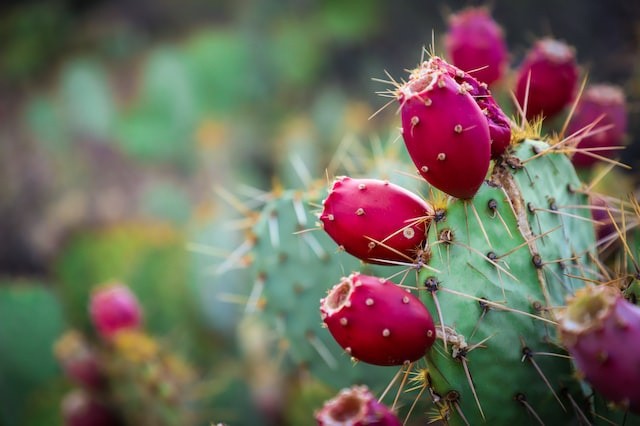Valais people are accustomed to seeing their mountain slopes covered in edelweiss flowers in the summer and with snow in the winter.
Cacti, however, are invasive plants that are quickly colonizing the slopes as global warming worsens.
Global warming resulted in cacti on Swiss mountain

The Opuntia genus of cacti, sometimes known as prickly pears, is said to be overpopulated in some areas of Valais and is threatening the biodiversity of the region by encroaching on natural reserves, as per The Guardian.
The nature conservation service in the canton of Valais is run by scientist Yann Triponez.
Opuntia, which was brought to Valais from North America in the late 18th century, has been a part of the region ever since.
The Alps' warmer climate, which allows for longer vegetative seasons, and the retreating snowpack, according to authorities, may be fostering the perfect environment for their growth.
Even in the Alps, snowfall is dwindling at lower elevations.
Since 1970, the amount of snow days in Switzerland below 800 meters of elevation has been cut in half, according to Meteo Swiss.
The range's average temperature already is 2.4C warmer than it was between 1871 and 1900, and temperatures are currently rising twice as quickly as the global average.
The proliferation of cacti in protected areas and natural reserves has authorities concerned.
Nothing else grows, claimed Triponez, when there are these cacti.
Four of the nine Opuntia species found in Valais, according to retired geology professor Peter Oliver Baumgartner, pose a threat to the region's ecosystems, particularly in places with acid or neutral soils, which make up one-third of the valley's south-facing slopes.
The only recent attempt to quantify the plants' existence in the area is Baumgartner's paper, which hasn't yet been published, thus quantitative data regarding their spread isn't currently available.
Baumgartner claimed that numerous places he has visited provide ample evidence of their profusion.
Prickly plant has low maintenance
Opuntia or known as Prickly Pear, is an invasive species of blooming succulent plant that can reach a height of 5 m.
It is a crassulacean acid metabolism (CAM) plant that is a member of the Cactaceae family, as per MPDI.
The Mediterranean basin, South Africa, Ethiopia, Australia, Italy, Spain, Argentina, and Chile are just a few of the places this species has expanded from cultivation since it was first discovered in Mexico.
The prickly pear is regarded as an extremely well-adapted plant in low-profile soils and hot, dry climates.
This plant's shape makes it a highly valuable source of nutrients for feedstuff in regions in which other species cannot live because of harsh environmental circumstances.
Invasive plant threat in biodiversity
Invasive plants take up more land than native plants do, and they threaten the environment as well as economies and people, as per Ecologist.
Guy Preston, chairperson and national program leader for the Natural Resources Management Programmes in South Africa, claims that invasive plants have an impact on wildfires, soil erosion, siltation of dams and estuaries, flooding, water quality, and more.
The most dangerous plant threats had the capacity to develop monocultures that stifle food supplies for local animals, change the chemistry of the soil, and change the composition of the canopy.
Islands are especially at risk.
Preston claims that invasive plants are currently utilizing 6% of South Africa's mean annual runoff of fresh water and that, if allowed unchecked, this percentage might increase to 20%.
In Africa, where the great majority of people depend on natural resources for survival, invading species has a particularly negative impact.
© 2025 NatureWorldNews.com All rights reserved. Do not reproduce without permission.





